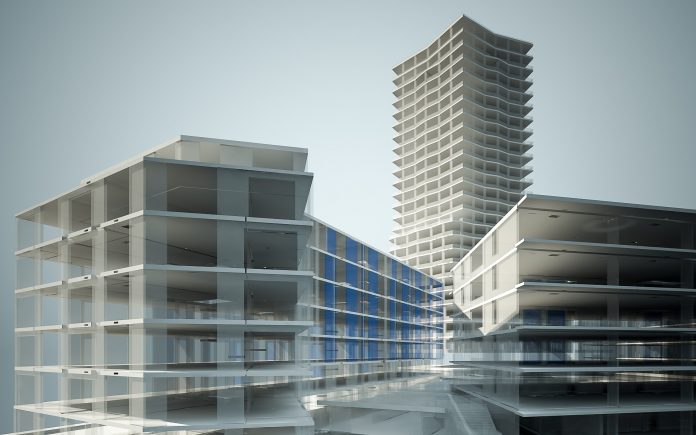BIM for structural engineering has typically been hampered by various issues. The lack of an integrated yet flexible design solution for the entire project team leads to inefficient working methods and manual errors. Combined with the trend towards larger projects, greater detail and freeform shapes, it is clear that structural engineering workflows need to adapt to meet all these requirements
A particular challenge structural engineers face is that exchanging data between different modelling tools and structural software packages can be difficult or incomplete. This leads to information being lost, forces recreation at different stages of the project and wastes valuable time.
According to a 2019 survey by the Institution of Civil Engineers, over 50% of engineering professionals are frustrated by receiving incomplete design data from other disciplines and 40% of those professionals are concerned by the risk of exchanging structural data between project team members.
There have been many proposed solutions on the market over the years, but the net outcome has always been reduced flexibility for the design teams and processes that become more specialized and increasingly difficult to manage.
Together, these problems result in an inconsistent, fragmented and poorly managed workflow. Not only does this reduce design efficiency and productivity, but it also means that any investment in software is often wasted. Often, the processes do not deliver the expected benefits and workarounds are developed, making the return on the investment negligible – which is a serious issue when the opposite is the desired outcome.
The reasons for change
An efficient structural engineering workflow that overcomes issues with data exchange and manual processes would significantly improve design creativity, as well as productivity. With less time spent recreating information, more resources can be dedicated to optimising the design and exploring different options and variants. This could lead to innovative new materials, approaches or solutions that improve quality, reduce errors or save money during construction, operation or future maintenance works.
Projects are also becoming increasingly large and complex, as well as more detailed and data driven. With project teams being located across many different offices or even countries, being able to quickly and easily share and access data at any time is a necessity. Similarly, using manual methods for repetitive project requirements is an incredibly time-consuming and inefficient design method.
Even with the time and cost required for these processes built into the project, it can be a frustrating and disheartening way to work. Implementing a modern, streamlined design approach can therefore potentially help to attract and retain the best talent, as well as help them work more efficiently. However, few 3D modelling tools for structural engineering can provide solutions to these challenges.
“Structural engineering is a discipline integral to the detailed design of any project in the AEC industry. By developing a managed workflow to enhance the outcomes of the processes involved, we provide a more efficient and cohesive way of working. This also results in a reduction of manual rework and errors, it ensures that the workflow is controlled, information is retained and risk is minimised.” said Nigel Rees, business strategy manager and strategic project lead at ALLPLAN.
Improving BIM for structural engineering
Allplan 2021 has been developed specifically to overcome these issues by providing a better, managed workflow for structural engineers. Using cloud-based technology and openBIM, 3D models from a range of disciplines and programs can be brought together to create a unified, federated model and then exported to structural analysis solutions, all without losing data. Similarly, models can be imported back after structural analysis is complete and integrated into the federated model with all data intact**.
Structural engineering thus becomes integrated within the design workflow, rather than sitting outside the process. Not only does this provide a more efficient and cohesive way of working by reducing manual rework and errors, it ensures that the workflow is controlled, information is retained and risk is managed.
Time is also saved by having the ability to transform 3D geometrical BIM models into high-quality structural analysis models using SCIA AutoConverter Light* rather than recreating them manually in separate software solutions.
The resulting analysis model can be connected to any analysis program and data exported to Microsoft Excel for further analysis and manipulation if required. It also provides the design team with the flexibility to use the model for design, as well as analysis and removes the potential for errors and discrepancies between different models.
When more is needed, it is possible to publish the results into Bimplus** – a cloud-based collaboration environment – for the entire team to review. Both the geometric and structural analysis model data (from multiple software) can be viewed, coordinated and managed from anywhere, and clashes between models can be quickly identified using built-in tools for improved design quality.
Bimplus offers further benefits by overcoming the issues of having a dispersed project team. Multiple disciplines can be working on the model simultaneously, yet in a managed and controlled manner. User rights and restrictions ensure that the right people have access to the right information at all times.
Tasks can be assigned to team members so progress can be easily tracked and changes between models can be managed and compared using functions such as Revision Compare. Backups can be made instantly at logical key stages and accessed from anywhere, providing assurance and peace of mind.
As project teams become increasingly dispersed and home working continues to be a necessity, having a cloud-based platform adds significant value and flexibility to the project, while enabling improved visibility and coordination for the entire team.
With a controlled and efficient workflow that incorporates automated processes, productivity and collaboration are enhanced and errors are reduced. Allplan 2021 streamlines the structural design process, saving effort, time, and money.
* Serviceplus or subscription contract of Allplan 2021 or Allplan Engineering Building 2021 required.
** Full SCIA AutoConverter product required.

Twitter: Allplan
Please note: this is a commercial profile.

















